ESG for SMEs: How Small- and Medium-Sized Businesses Can Embrace ESG for Long-Term Growth
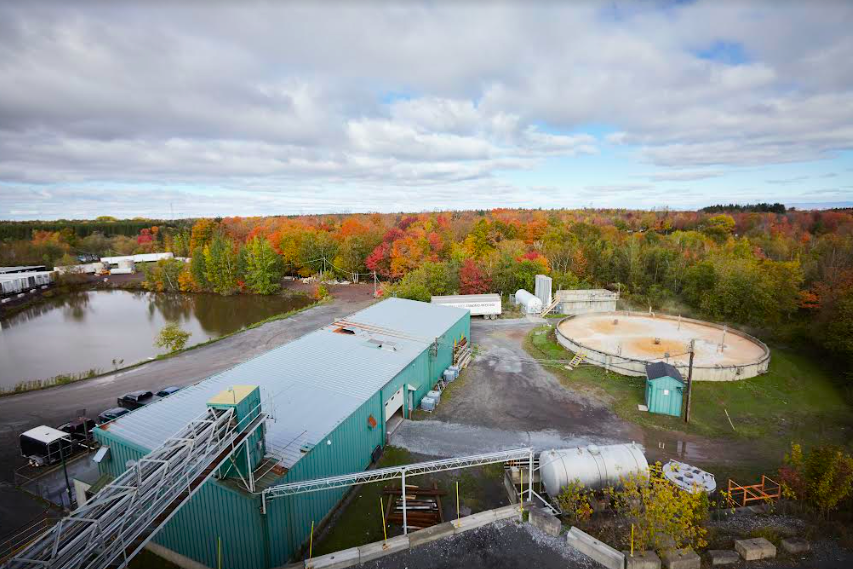
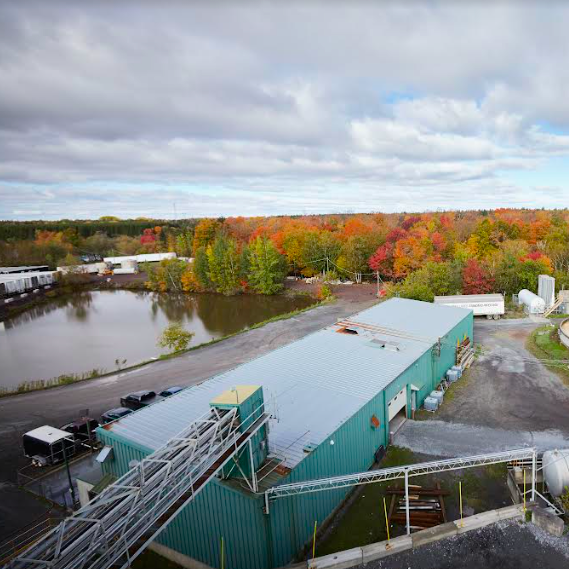
Sustainable impact and innovation were top of mind for Jeffrey Crawford when he joined as vice president of sustainability at Sustana, a sustainable recycled fiber, and paper manufacturer that Blackstone recently acquired. Since the acquisition, the company has been taking a closer look at its ESG (environmental, social and governance) performance and strengthening its integration internally and throughout its value chain.
Pursuing regulatory compliance and competitive ESG performance can involve significant investments of time and, yes, money — especially for a small or medium-sized enterprise (SME), Crawford told TriplePundit. Even so, in expanding its ESG initiatives, Sustana is not only able to avoid business risks, but also engage top-notch customers. The same results are possible for all SMEs.
The business benefits keep rolling in: Prioritize ESG systems
Companies that rank highly on ESG indicators tend to perform strongly. For Sustana, prioritizing ESG issues has positioned the company as an attractive business partner, Crawford said, as risk mitigation is an underlying benefit of ESG. On the environmental side, risks could include climate, water and energy security, while social risks include labor security and boycotts. In addition, poor governance can lead to corruption and disrupt internal and external communication channels.
To strengthen its ESG management, Sustana conducted a materiality assessment that engaged its key stakeholders. To maximize its impact, the company has leveraged its influence for good by focusing on key issues, Crawford said. These are climate change, circularity, water, energy, and sustainable supply chains, to name a few.
Along with expanding recycled fiber offerings, the company has leveraged biogas to power its operations. Crawford said the company also procures supplies from areas with a low risk for corruption and human rights abuses while working with suppliers to further mitigate social and climate risks. Sustana avoids sites near key biodiversity, as well.
Those ESG ambitions spur innovation, and Sustana is the first and only company to sell recycled fiber that is FDA-compliant for direct contact with food.
“So many brands have recycled content and climate mitigation targets, and we’ve been a solution for them,” Crawford said. “However, we're just a medium-sized company. We’re trying to use as much power and leverage as we have, but we need to collaborate with others in this industry to have a greater impact.”
What can SMEs do to make progress on ESG?
ESG reporting standards and regulations are evolving rapidly and will, directly and indirectly, impact SMEs. To stay competitive, SMEs should ensure they are advancing their ESG initiatives and reducing their greenhouse gas emissions. For example, Canada’s carbon pricing system and the European Union’s carbon border adjustment mechanism are expected to have direct cost impacts on businesses operating in or entering those markets.
Although they’re just starting to feel pressure from regulators, investors, customers, and larger companies that are engaging their supply chains to report on ESG data and risks, Crawford said SMEs have no time to waste: “It’s a lot to do in a very short period of time.”
Here’s a taste of what he advises for SMEs:
Codify your purpose and principles. Have you drilled down into your organization’s purpose? Officially defining the organization’s purpose and externally committing to principles, like the United Nations Global Compact’s on the environment, human rights, labor, and anti-corruption, help focus efforts and hold the company accountable. In addition, regularly conduct ESG materiality assessments, which will identify your risks and opportunities for impact, Crawford advised.
Establish ESG governance and risk oversight. Establishing effective oversight of ESG risks and performance at the board and senior management levels is critical. SMEs can accomplish this by establishing ESG committees or adding responsibilities to existing committees. ESG topics like climate change represent risks for many companies. Integrating these into existing enterprise risk management (ERM) systems and processes will improve resilience.
Start tracking your progress. You’ll need to decide which reporting framework you’ll use and then gather data to establish baseline performance. The data you report externally will need to be investor-grade, comparable and collected through auditable processes, Crawford said.
Build the business case internally. Crawford recommends conducting an internal audit of the company’s ability to report externally in accordance with ESG reporting standards. Invite and lean on the finance team to support this effort. “They tend to have strong familiarity with processes and controls, and their opinion holds weight with senior leadership,” he said.
Work smarter, not harder. Once you’ve established a baseline performance, you can start setting targets and risk tolerances, develop critical data processes and controls, and better manage your risks. It’s smart to automate as many of your data collection and reporting processes as possible, using systems designed for risk and ESG data management.
Engage with your stakeholders. As you get your own house in order, begin to engage suppliers and customers. Provide opportunities for suppliers on key issues and open their eyes to their business case for ESG. The data you’ve been collecting on the risks and benefits of your burgeoning initiatives will help with your argument.
Connect with your peers. Continue growing by joining and supporting the right groups, initiatives, and industry associations. Here’s where collaborating with suppliers and customers to show support for progressive sustainability legislation comes in. Crawford also lauds the Science-Based Targets initiative, which presents an implementable path for each sector to move toward the aim of the Paris Agreement.
The bottom line: Now is the time to act for SMEs
Crawford warned that SMEs don’t have any time to lose, especially as large companies integrate vendor ESG performance into their procurement decisions and cut organizations from their supply chains with high ESG risks. But consistent baby steps lead companies forward. Continue building the capacity of employees and the organizations in your value chain on sustainability issues and building out your ESG systems, and you will see results, he said.
This article series is sponsored by Sustana Fiber and produced by the TriplePundit editorial team.
Image credit: Sustana
The Importance of Giving Back — Even In Times of Uncertainty
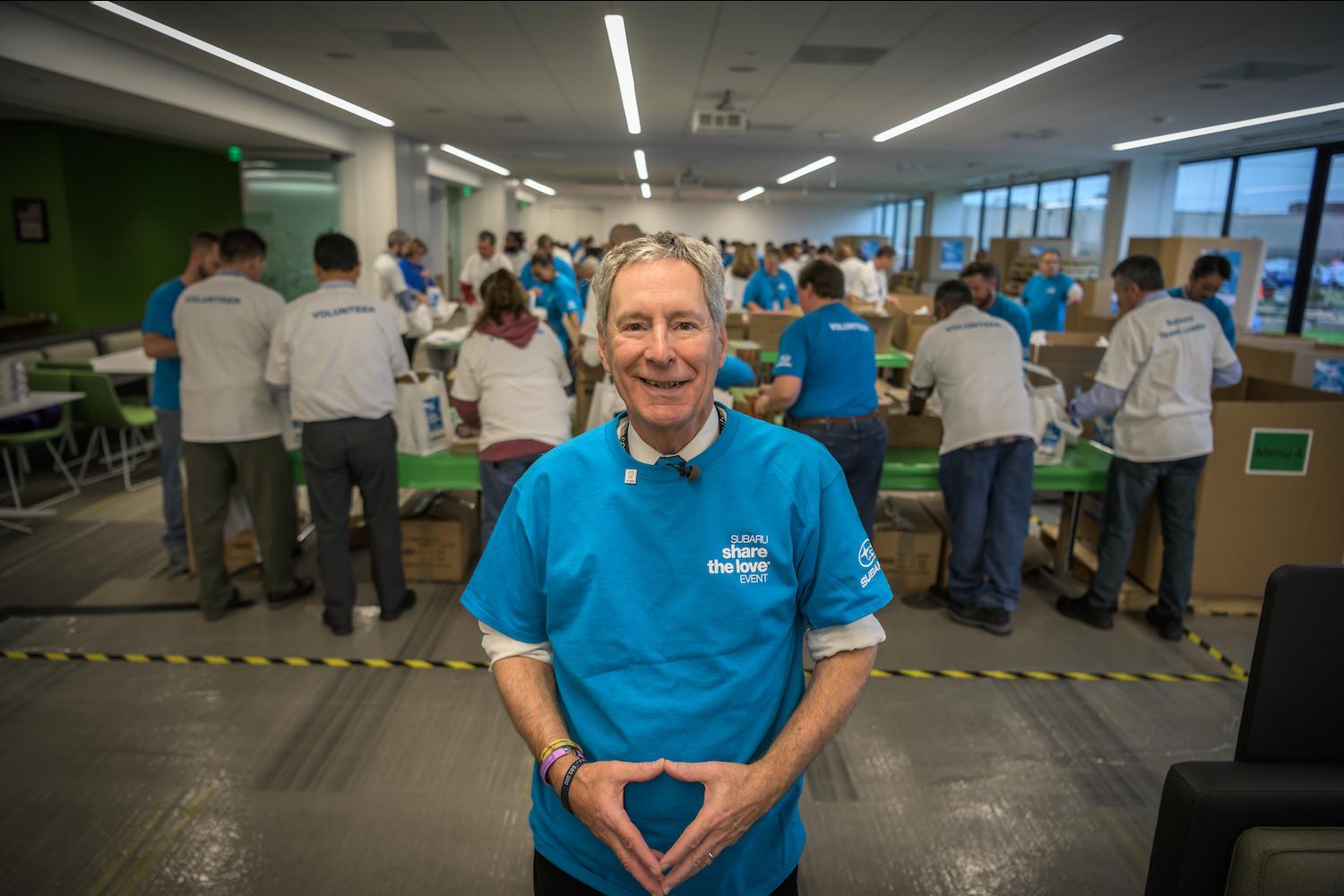
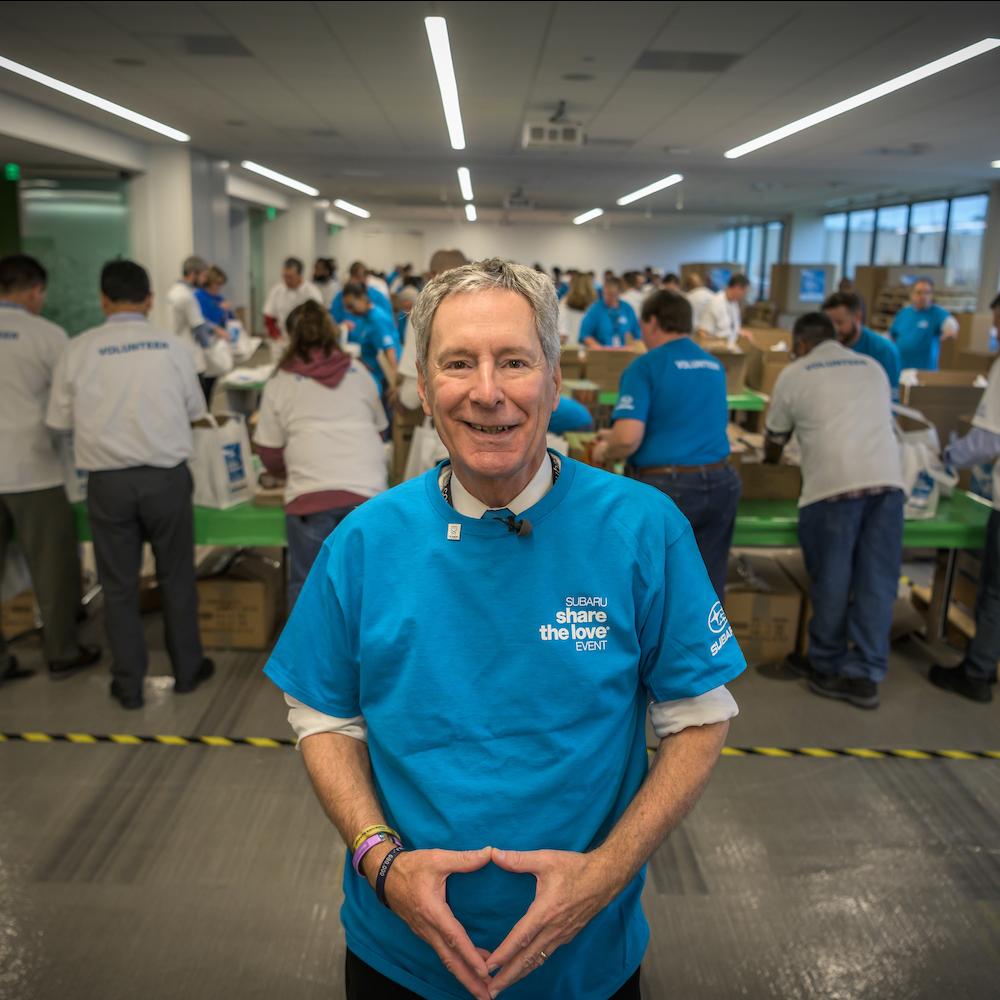
Generous, community-minded and loving isn’t typically how the American public describes car companies or car dealers. But back in 2008, 10 years before I was promoted to CEO of Subaru of America, I had an idea that might change that. What if, instead of a rebate or financial incentive program at the end of the year, we took $250 from every sale or lease and gave it to charity? This was at the time of the 2008 financial crisis in the United States, when many people lost their jobs, and many were in need.
Everybody thought I was nuts. They said: “$250!? That money could be used to lower the lease payment by $10 a month, or could be put toward a free accessory! People only care about themselves. Don't you understand the cost of doing such a thing!?”
The point is: It’s never a convenient time for a leader to advocate giving away money, and when you are the person managing the money, the task can be especially challenging. In 2008, I was both the COO and CFO at Subaru of America, and with those titles comes the presumption that you’re going to protect the bottom line at all costs and shoot holes in any attempts that get in the way of any return on investment — especially during a time of uncertainty like the financial crisis. But I’ve been dealt a fortunate hand in life and have always tried to give back where I can, and I knew giving back as a company was the right thing to do. As a financial veteran of the automotive industry, I had a feeling it would pay off. As Subaru celebrates the 15th anniversary of the Subaru Share the Love Event, I am proud, excited and quite frankly relieved to report that I was correct on both counts. By the end of this year, Subaru and its participating retailers will have donated over $250 million to help those in need through our company’s Share the Love Event.
When it comes to charitable giving, the choice must come from the heart. That’s why, starting with the first Subaru Share the Love Event, we put our customers in the driver’s seat and let them select from a group of national charities they could designate to receive the $250*. This year, there are four national charities customers can select from: ASPCA, Make-A-Wish, Meal on Wheels and the National Park Foundation.

After a few years, we realized that many customers, as well as our retailers, wanted to have the option to keep charity donations within the communities where they live and work. That’s why in 2014, Subaru retailers began sponsoring local nonprofits, or as we call them “Hometown Charities,” during the Subaru Share the Love Event, and these local charities are the recipients of over 70 percent of Share The Love donations. This can add up to tens of thousands of dollars of much-needed funds going right back into the retailer’s hometown to make their community a better place to live and work! Over the years, I have had the privilege of attending many of these check presentations, and I am always moved because it truly is life-changing money for these local charities.
After a few years, we knew we created something truly special with the Subaru Share the Love Event, and we wanted to see how we could make an even greater impact throughout the entire year. That’s how we came up with our Subaru Love Promise activations: Subaru Loves to Help in February, Subaru Loves the Earth in April, Subaru Loves to Care in June, Subaru Loves Learning in August, and Subaru Loves Pets in October. People walking into a Subaru retailer now realize that there’s something different happening at this company. Our giving back enlightened us to the fact that we were delivering on our commitment to be “More Than a Car Company.”
Subaru is a relatively small company when you look at the other large automotive manufacturers in the United States, and to have a meaningful way to differentiate our brand from the competition, we needed our retailers to change the way they approached the market. The Subaru Share the Love Event and the Subaru Love Promise activations organically paved the way. Having our retailers immerse themselves in their communities, being an engaged and committed presence, changed the dynamic: from a dealer selling hard to customers, to a retailer where a customer could help us help others by their purchase or lease of a Subaru vehicle.
Whether entering the lobby of our headquarters in Camden, New Jersey, or walking through the doors of your local Subaru retailer, there is little doubt about what Subaru stands for and for what accomplishments we are most proud.
Typically, car dealers are remembered for selling and promoting themselves to their communities, not supporting and participating in them. Thanks to the Subaru Share the Love Event, Subaru and our retailers have changed that dynamic over the past 15 years.
Although the timing never seems convenient, we choose to focus on giving back, even in times of uncertainty. We believe we will be remembered for our impact on the lives within our communities. But whatever our eventual place in history, we know that our retailers, our brand and our customers are far richer for the experience.
Images courtesy of Subaru of America, Inc.
This article series is sponsored by Subaru and produced by the TriplePundit editorial team.
*Subaru will donate $250 for every new Subaru vehicle sold or leased from November 17, 2022, through January 3, 2023, to four national charities designated by the purchaser or lessee. Pre-approved Hometown Charities may be selected for donation depending on retailer participation. For every new Subaru vehicle sold or leased during the campaign period, participating retailers will donate a minimum of $50 in total to their registered Hometown Charities. Subaru will donate a total of $5 to their registered Hometown Charities for every Subaru vehicle routine service visit during the campaign period. A routine visit includes customer payment of $5 or greater, or any service that includes a genuine Subaru oil filter. Purchasers/lessees must make their charity designations by January 13, 2023. The four national charities will receive a guaranteed minimum donation of $250,000 each. See your local Subaru retailer for details or visit subaru.com/share. All donations made by Subaru of America, Inc.
FIFA and Qatar Drop the Ball on an Inclusive World Cup


The FIFA World Cup is never short on drama. The world’s most anticipated soccer (or football, depending on who you ask) tournament brings fans together every four years to witness emerging superstars, last-minute goals, thrilling upsets and controversial officiating. But not all the drama at the 2022 World Cup hosted in Qatar is taking place on the pitch.
Qatari leaders as well as officials from FIFA, the governing body for international soccer, have insisted for years that the World Cup would be open for everyone to enjoy — including members of the LGBTQ community. This is despite the host country’s laws restricting same-sex sexual activity, which can carry a punishment of up to seven years of imprisonment.
FIFA and Qatar fall flat on promise of World Cup 'without discrimination'
Qatar’s ruling Emir Tamim bin Hamad al-Thani told the U.N. months before the tournament’s opening match on November 20 that the small Arab nation would welcome people “without discrimination.” FIFA’s head of fan experience, Gerdine Lindhout, echoed this warm welcome, saying there is “no risk” to LGBTQ fans attending matches and showing public affection when inside the official tournament zones.
Yet, the reception of rainbow shirts and Pride armbands hasn’t been as warmly welcomed as FIFA and Qatar led to believe. Security guards have heckled fans and journalists with Pride gear trying to enter the stadiums and FIFA has threatened to penalize teams wearing rainbow armbands intended to show solidarity and support for the LGBTQ community.
American sportswriter Grant Wahl says he was detained for nearly half an hour and “angrily demanded” to remove his rainbow T-shirt before guards ultimately granted him entry. In Wales’ opening match against the United States, women Welsh fans had their rainbow bucket hats confiscated upon entry. Oddly, men — who are subject to far stricter punishments for same-sex sexual activity in the country — were not asked to remove their rainbow hats.
FIFA’s inconsistent stance before and during the World Cup
FIFA reportedly offered apologies in both instances and has reemphasized its stance that Pride gear is permissible throughout the stadiums. Though FIFA is allowing fans to wear the gear — including the Welsh women, who returned for the team’s second match a few days later with the same rainbow hats — it’s taken a harsher approach for the players representing their countries on the field.
Players from seven European teams competing in the tournament — Belgium, Denmark, England, Germany, the Netherlands, Switzerland and Wales — abandoned plans to wear “OneLove” armbands (pictured above) after FIFA announced it would issue a yellow card to each player donning the symbol. Two yellow cards in a game sends a player off for the match and disqualifies the player for an additional match.
Ironically, the ban on the armbands had its own unintended consequences. The Dutch company that manufactures the armbands, Badge Direct BV, said it had completely sold out its inventory within two weeks after FIFA announced the ban.
FIFA’s resistance to fully embrace the LGBTQ community on the largest stage is at odds with the progress made from the football world’s diversity, equity and inclusion initiatives the past several years. Nearly every major international soccer league — Premier League (England), Bundesliga (Germany), La Liga (Spain), MLS (United States), and others — have made concerted efforts to engage and support the LGBTQ community.
Seizing the global stage to promote LGBTQ rights
Soccer is far and away the world’s most popular sport, and the World Cup is the unquestioned leader in most anticipated and viewed tournament. A staggering 3.5 billion people — just shy of half the entire world’s population at the time — tuned in to watch at least one minute of game action for the 2018 World Cup held in Russia.
Of course, the host country has the right to subject its visitors to its customs and cultures. Qatar changing course on serving beers in the stadiums to abide by its strict alcohol consumption policies disgruntled many fans and lost merchants profits, but it’s likely not a life changing event.
But FIFA, as the organizing body who chose Qatar to host the World Cup amid extreme controversy and corruption charges, also has the right — and obligation — to support all fans and players who have traveled from every continent to experience their event. Promoting inclusivity — or at least offering the space and freedom for others to do so — on the biggest stage of the most popular sport is an opportunity too rich to pass up.
The bottom line
From a business perspective, it’s also a simple step FIFA could take to help repair a reputation that’s seen better days since awarding Qatar the 2022 host honors a dozen years ago. Beyond the suspect corruption allegations behind the bid, the construction of seven new stadiums were built by low-paid migrant workers who endured poor working and living conditions. A Qatari official pegs the deaths of migrant workers to be in the 400-500 range, though a 2021 report from the Guardian suggests the number of deaths could be as high as 6,500.
As the World Cup soon reaches the quarter-finals round, the spotlight grows brighter. The world will be watching to see if and how FIFA and Qatar can make good on their word: a tournament where everyone belongs.
Image credit: Royal Dutch Football Association and Badge Direct VB
Does Your ESG Story Click with Consumers? How to Craft Messaging That Stands Out
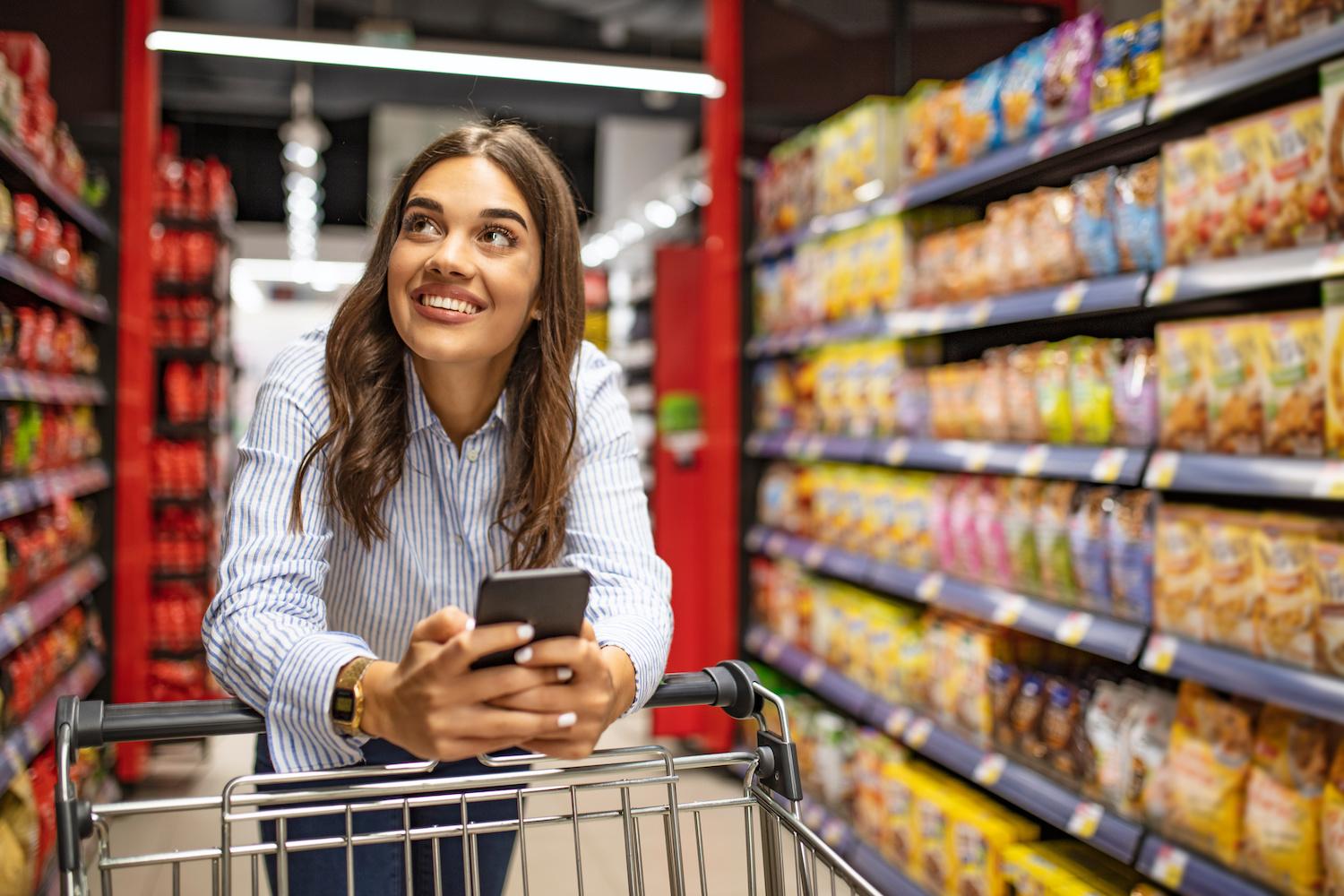
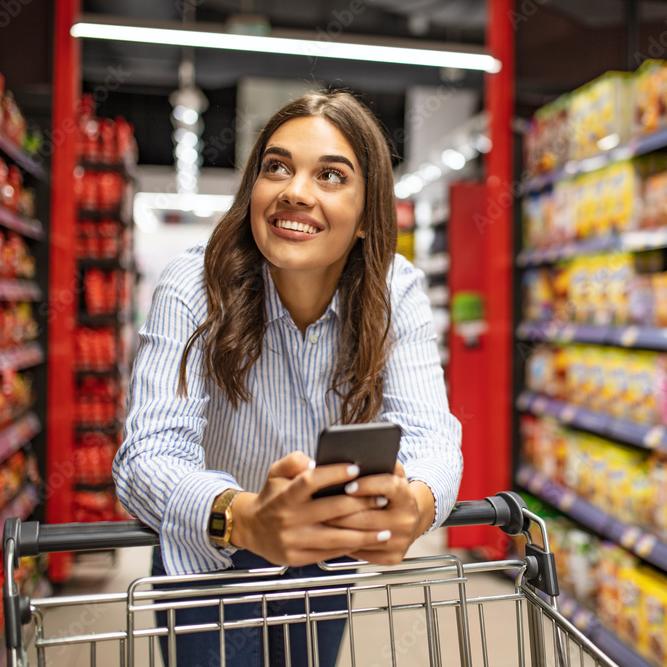
As the calendar moves toward 2023 and inflation continues to influence consumer purchasing worldwide, massive banks of data make clear that companies should not scale back their environmental, social and governance (ESG) programs nor shrink their outreach to inform customers about their ESG efforts.
Especially with the price volatility of sectors like food and grocery, where switching brands is an easy, in-the-moment choice, companies can’t afford to overlook the importance of sustainability and social responsibility in consumers’ minds if they want to preserve and build brand loyalty.
“In the current economic climate, social and environmental performance still matters. Brands that want to retain and win customers need to stand for something,” said Mike Johnston, managing director for data products at the research technology firm Glow.
“Even well-off consumers will be looking for opportunities to trade down to save money. Customers need a compelling reason why they shouldn't swap your brand for a cheaper alternative,” Johnston added. “Along with quality, sustainability concerns are likely to be a key factor consumers consider.”
However, great ESG programs with successful positive impacts alone don’t translate into profit potential if consumers aren’t aware of them. Brands must find the right messages and effective methods for delivering their company’s ESG stories — the ones that click and have staying power with customers.

Learning from one brand’s experience
Mondelēz International owns Cadbury, the maker of chocolate candies sold in more than 40 countries. The brand measures consumer perceptions of its ESG efforts through Glow’s Social Responsibility Score (SRS) and related data tools. Cadbury has high brand awareness in general and clear ESG credentials in particular: 8 in 10 consumers who are aware of the brand have an opinion about Cadbury’s sustainability performance, according to Glow data.
For example, Mondelēz has had a partnership with Fairtrade since 2009 and developed the sustainable cocoa program Cocoa Life over the past 10 years, both with websites dedicated to them. Cadbury products carry on-pack messaging to call attention to the Cocoa Life initiative, which is designed to support fair trade, natural resource sustainability and improved lives for cocoa farmers.
This combination of ESG programming and consumer messaging is reaping rewards based on results from Glow’s SRS tracking. The data tools also retrieve verbatim comments, such as praise for Cadbury’s efforts in “environmental sourcing their chocolate” from a customer in Sydney, illustrating what consumers recognize as positive attributes of the brand.
In Australia, Cadbury ranked the highest in the snacking subcategory of 14 brands tracked, and in the U.K. the third highest in the snacking subcategory.
Cadbury saw particularly good progress from August through October of this year — raising its SRS in Australia by 13 percent, substantially more than the average increase of 3 percent from over 250 brands measured. For that rolling three-month period, Cadbury scored 24 percent above the average of all tracked brands and 15 percent above the average of the score for food and grocery brands.
In the U.K., Cadbury’s position is the same as in Australia, where the brand scored 24 percent above all tracked brands and 15-percent above the average score for food and grocery brands in the latest time period. Achieving that kind of dominance in consumer perceptions about a company’s efforts on fair trade and sustainability is what companies want to see.
Yet digging deeper, Cadbury’s SRS rankings reveal new opportunities ripe for further development.
Cadbury’s SRS rating was 94 percent higher among those who recognized even one of the company's ESG initiatives, compared to those who had no such awareness. This demonstrates that positivity toward a product can be generated from ESG programs and from effectively delivering quality messages about those initiatives.
Still, SRS data indicates a significant proportion of consumers were unaware of Cadbury’s specific ESG programs. If a brand like Cadbury, with its high brand awareness and long-running ESG programs that are heavily communicated, is still failing to reach some consumers, what’s the next step for it — or any company — to make the connection stick?

Opportunities in the gaps
“Consumers say they are gathering their ESG messages primarily through news and media coverage, product packaging and advertising,” said Tim Clover, CEO of Glow. “But they want to get more information via brand-owned channels like packaging and in-store/online at the moment of purchase.”
The key phrases in Clover’s observation of consumer data are “more information” and “moment of purchase.”
In the U.K., only Montezuma's and Tony's Chocolonely are ahead of Cadbury in their ESG ratings as evidenced by the SRS. The Dutch brand Tony’s Chocolonely has an unusual way of getting its ESG message across: its chocolate bars are segmented in irregular pieces to represent inequalities in chocolate production. Messaging on the inside and outside wrappers further explain the brand’s quest to eliminate injustice from chocolate manufacturing.
“The leading brands … are using every possible opportunity to communicate how they are making a difference to people and the planet,” Clover said.
Based on the data, consumers are telling businesses that their ESG practices matter — and so does the way they communicate them.
In particular, messaging needs to get real and get specific. “Brands that grandstand about distant, abstract goals can confuse or lose the trust of tuned-in and action-focused consumers, even when the programs themselves are highly impactful and beneficial,” Clover said. The data shows “regular updates and communications” yield “increased engagement” from a brand’s followers “and engender trust and loyalty,” he advised.
The bottom line: Consumer data drives ESG messaging that stands out
If it sounds like consumers want a relationship with companies, they do — and they’re seeking something that goes beyond a transaction. Business leaders need to treat those relationships the same way as anyone would regard a personal one, with communication and trust.
As with typical human interactions, businesses have to “check in” with their customers about how the relationship is going. Data and feedback together help companies to identify where the successes are and in what ways they can improve.
It may seem like a tall order to give mass outreach a one-to-one feeling, but the data says that’s what consumers want, along with a good story delivered when and where they need it for making the best purchasing decisions.
Clover captured those expectations with this statement: “It is clear that consumers don’t expect perfection, but they do expect commitments, honesty and progress.” In other words, consumers aren’t just hungry for consumables. They’re craving a better world and food for thought.
This article series is sponsored by Glow and produced by the TriplePundit editorial team.
Image credits: Dragana Gordic/Adobe Stock and Mondelēz International
Regenerative Agriculture To Expand Across North Dakota and Beyond


Several top food and beverage companies recently announced the creation of a new organization to help farmers transition to more economically and environmentally sustainable growing practices including regenerative agriculture. PepsiCo, King Arthur Baking, General Mills, Anheuser-Busch, Unilever and the Walmart Foundation jointly created the Trusted Advisor Partnership to help provide farmers with the technical skills they need to grow soil and improve their farms' outputs.
The program is launching first in North Dakota, where erosion is responsible for a staggering 50 percent topsoil loss in some areas, resulting in significant decreases in agricultural production. After piloting the program there, the partnership’s leaders are aiming to expand it to other regions. TriplePundit recent spoke with several of its stakeholders to learn more about this new organization’s goals.
Training the advisors who train farmers
The partnership engaged North Dakota State University and local crop advisors to develop interactive training programs to help farmers better understand and implement regenerative and sustainable growing practices, ranging from cover cropping to integrated pest management. Dr. Abbey Wick, North Dakota State University (NDSU) Associate Professor, Extension Soil Health Specialist and co-lead for the project, told 3p, “With a wide variety of commodities grown within our borders and a strong existing base of Certified Crop Advisors, North Dakota is the ideal region to demonstrate the critical importance of connecting farmers with independent information delivered by trusted advisors – information on the conservation ag practices that build not only better soil but a better bottom line for our state and tribal producers.”
The nonprofit Sustainable Food Lab is managing the regenerative agriculture project and it is currently working with corporate partners to develop financial incentives for farmers who participate in the regenerative agriculture program.
The founders of the partnership say that their work will help create a more resilient agricultural sector. Sustainable Food Lab's senior director Elizabeth Reaves said, “We’re excited to be taking the wraps off this cross-sector effort, especially on the heels of an unprecedented investment in our nation’s ag economy from the USDA Partnerships for Climate-Smart Commodities fund. Dollars alone are not enough; there is, and will continue to be, a pressing need for more agronomic talent to de-risk the transition to regenerative. By syncing farmers with unbiased technical support and customized supply chain programs, we believe this project has the potential to accelerate the momentum around soil health and whole-of-farm stewardship in the U.S.”
The partnership is now in its early phases, and so far has hosted workshops and distributed surveys to better understand baseline levels of regenerative agricultural practices in North Dakota. The organization’s goal is to reach 300,000 acres by the end of 2025.
A $1.6 million grant from the Walmart Foundation has allowed the Sustainable Food Lab to train crop advisers in cutting-edge, research-driven regenerative practices so that they can in turn help farmer clients build soil and improve the long-term economic and environmental resilience of their farms. The partnership’s leaders aim to connect certified crop consultants with farmers to provide them with one-on-one advisory services. The group is currently recruiting more crop consultants and they are aiming to triple the number of certified crop consultants available to participating farmers by 2024.
Expanding regenerative agriculture beyond North Dakota
Currently, the partnership is recruiting financial supporters and collaborators to join its mission. Nicholas Mylet is Global Director of Sustainable Agriculture for Anheuser-Busch, one of the founding corporate partners of the partnership. “Cross-sector collaboration is critical to help create systems change. This initiative is a key opportunity to work alongside peers and the local farming ecosystem to help build resilience for people and planet,” he explained to 3p.
Members of the partnership insist that their North Dakota test case can become a model for other communities, including Indigenous peoples, and are seeking broad support across more agricultural regions and stakeholder groups.
Image credit: Pixabay
Three Reasons Corporations Should Care About the Global Sanitation Crisis

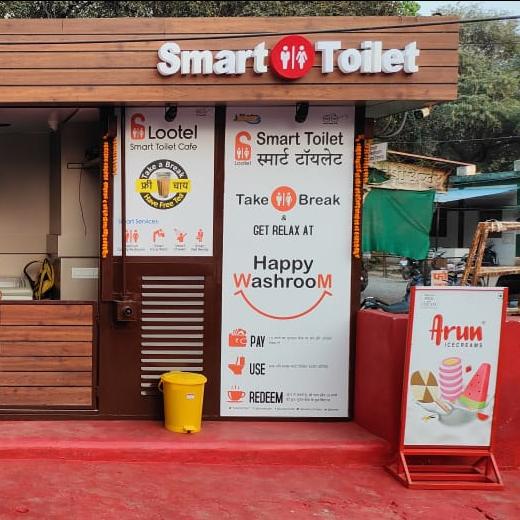
Toilet Board Coalition Accelerator graduate Lootel smart toilet café in Indore, India. Image credit: Lootel 2022
In most regions, the two supply chains that are operating at scale are those of governments and multinational corporations. These supply chains are already designed to serve tens and hundreds of millions of people each day. Products and services exchange hands, much like a relay race, with each participant fully aware of their role. These supply chains have evolved over a significant period of time and are quite stable in their operations. A recent result of these two supply chains uniting to produce transformational impact, has been the COVID-19 vaccine roll-out. Since the pandemic broke out, in March 2020, more than 12 billion doses of COVID vaccines have been delivered worldwide.
Surely – if 12 billion vaccine doses can be delivered in 18 months to benefit the global population, providing safely-managed toilet facilities for 3.6 billion people in the next eight years cannot be a stretch too far?
Currently, hundreds of thousands of people die each year due to inadequate sanitation. This is preventable. Governments and large corporations working together can fix this. In a post-pandemic world, governments are motivated more than ever before to bring hygiene to the farthest reaches of their countries. If corporates can join them in this zeal, universal sanitation, i.e. Sustainable Development Goal 6 (SDG 6), can be a reality much ahead of 2030. While governments focus on social impact and worry about public funds, corporations can bring the business case for safe sanitation and unlock private capital. It can be a wonderful partnership.
But – what do corporations achieve in ensuring everyone, everywhere can access a safe toilet?
Ensuring resilient communities
Communities that have safe sanitation will have health, economic prosperity and resilience. Whether as partners or customers, individuals in these communities can become active participants in business growth. If half of humanity is not provided with the basic rights and tools to perform at their potential – is sustained business growth possible?
Sanitation and a healthy workforce
Large companies have a decentralized, distributed workforce contributing from multiple regions. This trend is bound to grow. The workforce will need to be further decentralized and present physically in the markets that it operates in. Increasingly, companies prefer to hire from the same communities that they are looking to serve. People from local communities can bring market intelligence quite seamlessly. As companies become more decentralized, their workforce – located in healthy, hygienic and prosperous communities – must be a durable engine of growth.
Recession-proof demand for hygiene
Sanitation is perhaps the only supply chain that meets its customers every day. People cannot ignore their various daily sanitation needs – there is no alternative option, unlike even eating and heating. Therefore, demand for sanitation products and services can be extremely recession-proof. As the product and service portfolio grows, it will require diverse products not just limited to traditional sanitation – innovative digital sensors, software, robots, and machine technology is already being used widely today.
While governments have a strong social obligation and ambition regarding universal access to safely managed sanitation, corporations have much at stake too, if they want their supply chains to be resilient and sustainable. Ensuring sanitation systems serve all can bring not only a positive impact on health and hygiene, but also human rights, food and water security, as well as climate change mitigation.
For this reason, we see a growing number of purpose-driven corporates in- and outside of the commercial sanitation space – including Toilet Board Coalition leading members Unilever, Kimberly-Clark and Lixil – joining hands with public sector and non-profit organizations – including USAID, Aqua for All and Asian Development Bank (ADB) – to invest in acceleration of vital sanitation solutions (such as the Lootel Cafe concept, shown above) being developed by small- and medium-sized enterprises (SMEs). There are multibillion-dollar market opportunities awaiting businesses with solutions for the billions of people currently under-serviced.
To achieve necessary social, economic and environmental windfalls in the coming years, corporations should collaborate with governments urgently – entering ‘mission mode’ (again!) in order to save and improve lives.
Image credit: Toilet Board Coalition
Start Planning Your 2023 Holiday Cocktails Menu Now — Suntory Is Investing in Regenerative Agriculture
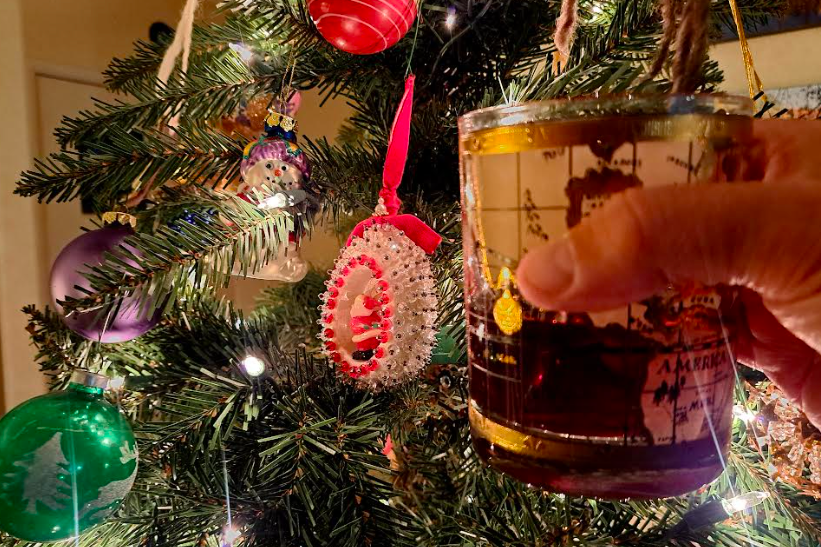

Farmers in Great Britain generally supported Brexit back in 2016, a decision that may seem dodgy now as many farmers across the U.K. are now struggling in the wake of the country deciding to cut ties with the European union. But regenerative agriculture could prove to be a lifeline for more farmers, including those who grow barley, as both the government and private sector are funding such programs in a bid to resuscitate the country’s agricultural sector. Among such companies is Suntory, the Japan-based brewing and distilling company that owns brands including Jim Beam and Maker’s Mark.
Suntory recently launched an initiative focused on reducing greenhouse gasses by sourcing U.K.-grown barley that farmers will cultivate using regenerative agriculture practices. In a partnership with the U.K.’s malt supplier Muntons, the sustainability consultancy Future Food Solutions, and barley farmers in the country’s East Anglia region, Suntory says the project will being production next year with the goal to grow barley that emits half the GHG emissions over the next five years.
The worldwide food and agriculture sector is amongst the largest sources of greenhouse gas emissions on the planet, responsible for between 25 and 33 percent of global emissions. To that end, food companies and investors are increasingly showing interest in regenerative agricultural practices in order to mitigate the sector’s emissions. Supporters of regenerative agriculture insist it can boost the health of ecosystems, improve soil health and even sequester carbon.
Not everyone shares this enthusiasm — some are making the argument that bold announcements about regenerative agriculture are a ruse to stall tactics that would be far more environmentally responsible. Nevertheless, during COP27, regenerative agriculture was on topic for several events and finance negotiations, as farmers, global leaders, climate change experts and business leaders all continue to search for ways in which to transform agriculture from a problem into a solution. Barley could very well be one crop that can help decrease emissions through such uses such as planting it during certain times of the year as a cover crop.
On that point, Suntory says raw ingredients comprise about 20 percent of the company’s total emissions across its entire value chain – with barley, a key ingredient in both beer and spirits, adding to that total. The company will gauge how the regenerative agriculture program will reduce emissions, improve soil health and water quality, ensure crop yields, and affect grain quality. Various brands falling under the Suntory umbrella will evaluate these crops’ contributions to Suntory’s goal to eliminate emissions across its entire value chain by mid-century.
Other brands in Suntory’s space, all of which are dependent on barley for their brews and whiskies, are dabbling in regenerative agriculture — a list that includes Diageo’s Guinness, Anheuser-Busch and Molson Coors. So drink up — at least next holiday season, as there’s a chance the moments you choose to imbibe will be a smidge more sustainable.
Image credit: Leon Kaye
Transition to Renewables Requires More Oversight to Prevent Slavery in the Supply Chain
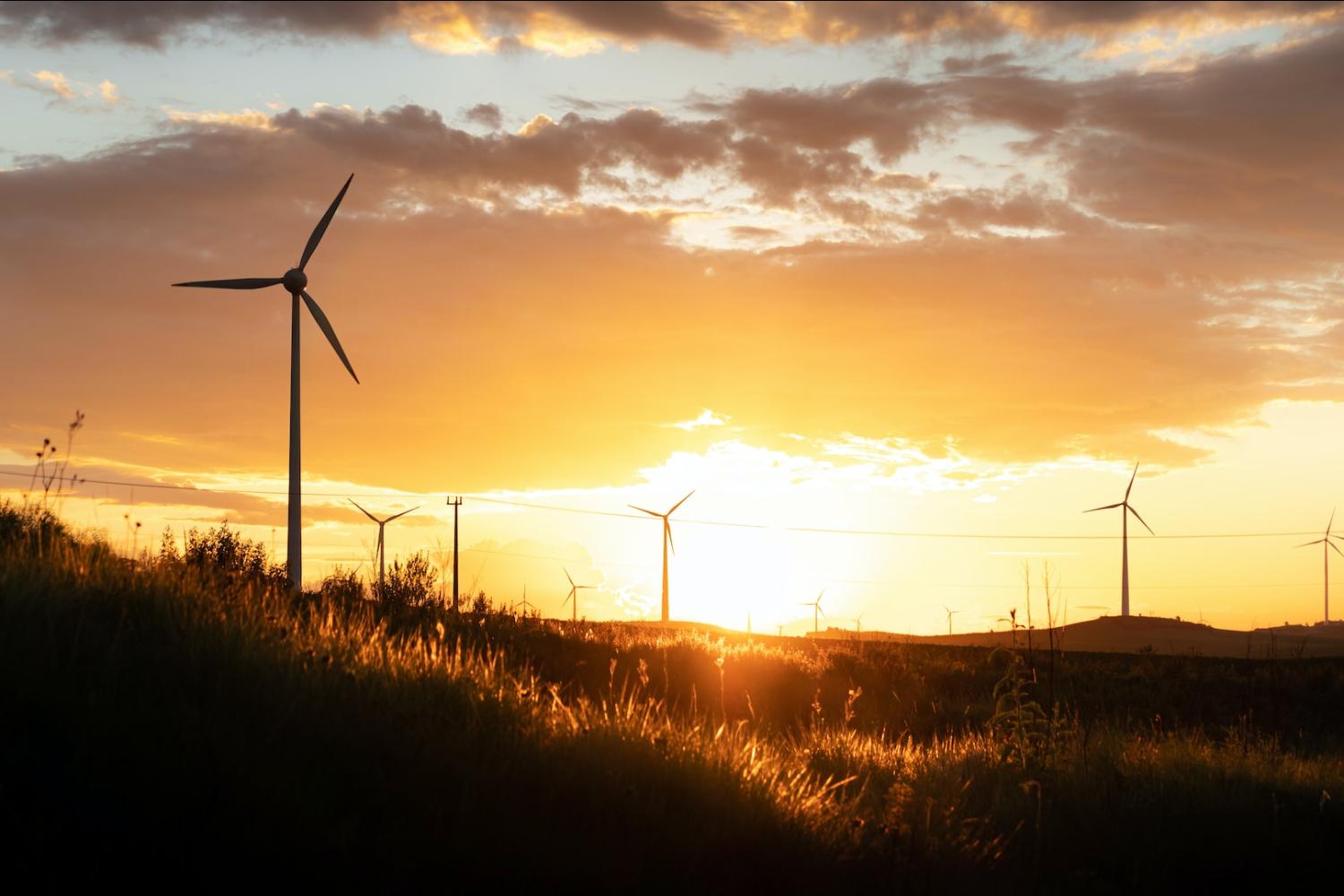
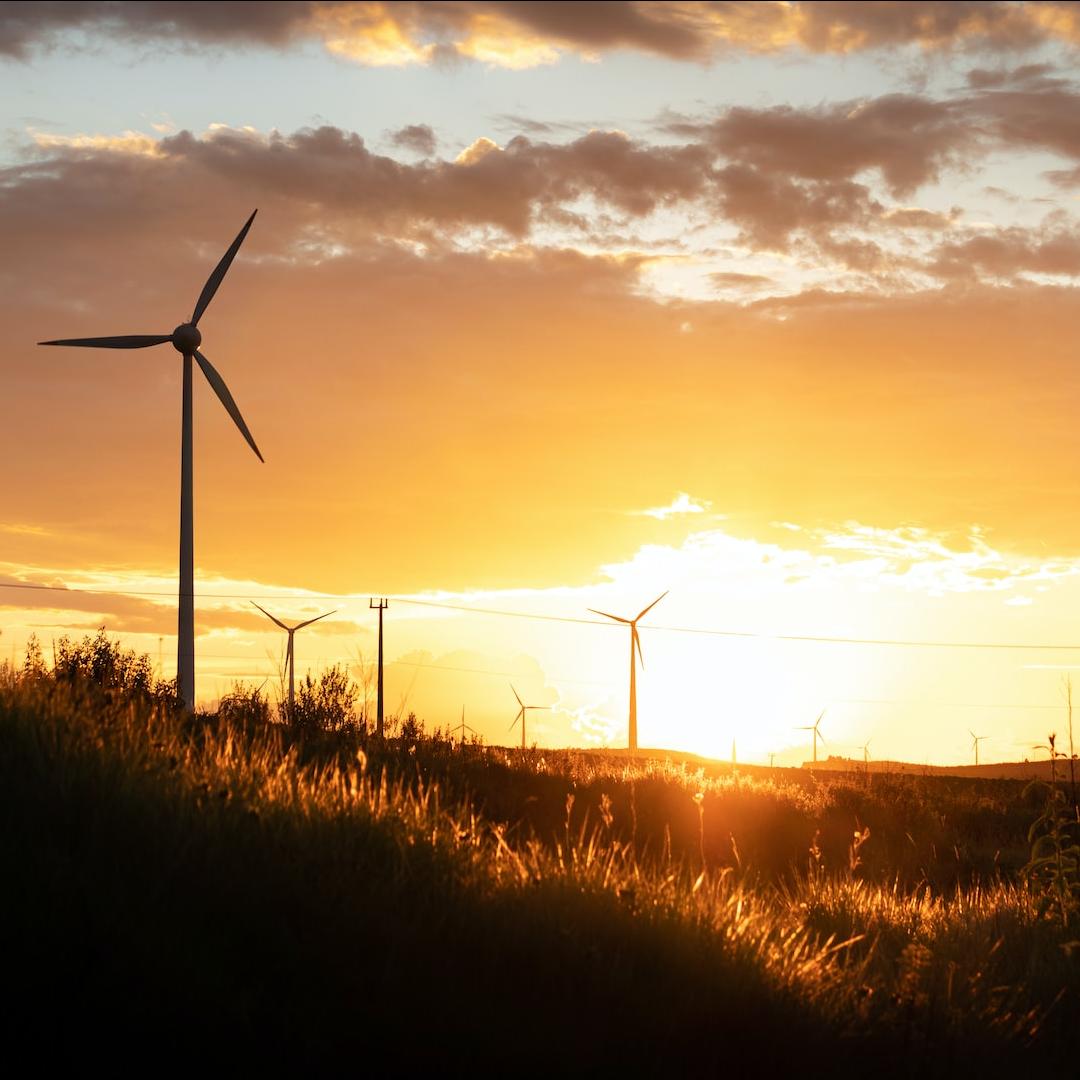
A white paper put out this month by the Clean Energy Council of Australia is calling for a “certificate of origin” on renewable energy components such as wind turbines, solar panels and batteries while exposing evidence that the industry is riddled with forced labor. While modern-day slavery is an ongoing problem across supply chains in a wide variety of industries, the ramp-up in renewables needed to reduce emissions worldwide threatens to make it worse. What’s more, while decarbonization is being hailed as a form of environmental justice, that can hardly be the case if the transition is built by people in forced labor.
The report, Addressing Modern Slavery in the Clean Energy Sector – which was produced in conjunction with the law firm Norton Rose Fulbright – focuses on Australia’s obligation to transition responsibly, but its lessons can still be applied worldwide. Australia has more than doubled its peak renewables output versus fossil fuel sources in the past five years and is currently on track to achieve a predominantly renewable grid by 2030. With much of the world rushing to convert as well, doing so demands a concerted action to protect vulnerable populations around the world. As the report points out, “The undisputed benefits of clean energy when it comes to climate change does not absolve the industry of its impacts in other areas.”
Modern day slavery is defined by the report as: “any situations of exploitation where a person cannot refuse or leave work because of threats, violence, coercion, abuse of power or deception.” Australia’s Modern Slavery Act includes traditional servitude and slavery as well as “the worst forms of child labor, forced labor, human trafficking, debt bondage, slavery-like practices, forced marriage and deceptive recruiting for labor or services” in its definition and requires mandatory reporting and mitigation of suspected slavery in the supply chain by businesses bringing in over $100 million annually. However, the system is hardly doing all that it could considering the lax compliance and lack of financial consequences — hence the need for oversight through a labeling or certification program.
According to the Clean Energy Council, there are three major areas of concern where accusations of modern-day slavery within the global renewables industry's supply chain appear to be well-founded: the production of polysilicon and solar panels in Xinjiang, China, balsa wood harvesting in Ecuador and cobalt mining in the Democratic Republic of the Congo (DRC).
Forty to 45 percent of solar grade polysilicon comes out of the Xinjiang Uyghur Autonomous Region in China, where 2.6 million people who belong to ethnic minority groups in the area face work programs as a part of the government’s re-education and internment, according to allegations by non-governmental organizations. The Chinese government has not allowed independent audits or investigations into the accusations but, due to the proclivity of polysilicon from the Uyghur region, the report hypothesizes that it is highly likely that forced labor will enter the supply chain in Australia via solar panels. Realistically, the same can be said for every country that is currently working on a transition to renewables.
Balsa wood from the Ecuadorian Amazon, which is used in wind turbines, is another area of concern. The Clean Energy Council reports that laborers have been working under very poor conditions, with a portion of their pay coming in the form of drugs or alcohol instead of cash. And, as deforestation worsens, instances of worker exploitation, coercion and modern-day slavery increase.
Lithium-ion batteries are an integral part of the renewables transition and cobalt is an integral part of those batteries. The DRC supplies 70 percent of the world’s cobalt, 15 to 30 percent of which come from the small-scale mines that employ roughly 250,000 people, 35,000 of whom are children as young as seven. They earn less than $2 per day while working in hazardous conditions, without the proper protective gear, with many of the workers meeting the definition of modern slaves.
The scale at which the energy transition is occurring threatens to increase incidences of modern slavery in certain regions. As such, the report recommends certifications at each level of the supply chain. Such oversight would aid in limiting the sale of components made through forced labor, thus forcing suppliers to fix their labor practices or risk losing markets while protecting countries from importing goods produced by slave labor. “We need to see industry, government, the financial sector and civil society working together to provide access to competitively costed, slavery-free renewable energy,” Dr. James Cockayne, the anti-slavery commissioner at Norton Rose Fulbright, said in the Guardian. “If we don’t, modern slavery risks significantly complicating the just transition to a decarbonized economy.”
Image credit: Filipe Resmini via Unsplash
It’s Official: Anti-ESG Office Holders Join Forces with Religious Extremism

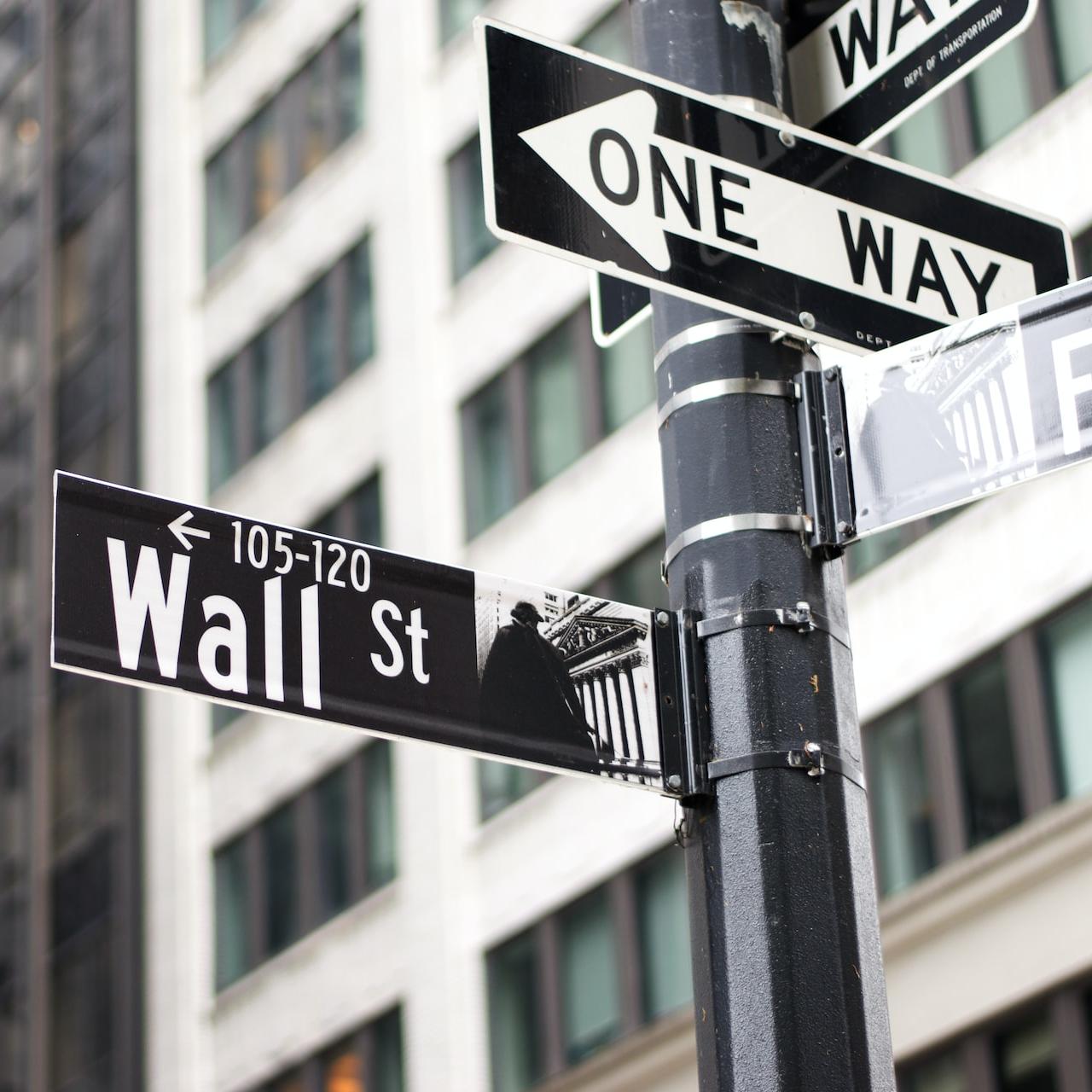
The anti-ESG movement and the “woke capitalism” canard has many U.S. political observers scratching their heads. Instead of the traditional Republican Party support for big business, a growing number of Republican office holders are leveraging their legislative power against corporate efforts to align with ESG (environmental, social and governance) principles. Nevertheless, the pieces of the puzzle are beginning to come together.
The usual suspects: Fossil energy lobbyists
The anti-ESG movement focuses primarily, though not exclusively, on stemming the flow of investor dollars to the renewable firms that that are involved in clean energy and related fields. It’s no surprise, then, to find the Heartland Institute front and center in the anti-ESG movement, which it also calls “anti-woke.” The organization is well known for developing media and legislative playbooks in support of the fossil energy and tobacco industries. The organization is apparently applying the same methodology to stem the flow of investment dollars to renewable energy.
Last June, Heartland catalogued its anti-ESG playbook in a long-form article under the title, “Woke Investing Gets Well-Deserved Pushback.”
“The Heartland Institute has written extensively and testified about the dangers of government agencies mandating banks, companies, and portfolio funds adopt and report on Environment, Social, and Governance (ESG) standards,” noted the article’s author, H. Sterling Burnett.
“Heartland has also provided detailed critiques of efforts by a cabal of large, multinational banks and gigantic financial companies to force every business to adopt ESG goals,” Burnett continued.
The use of the word “cabal” is not a one-off. Burnett continues to deploy coded words that evoke the anti-Jewish canard of an all-powerful financial cult that pulls the strings of the global economy.
Editor's note: Be sure to subscribe to our Brands Taking Stands newsletter, which comes out every Wednesday.
“The woke, billionaire corporate elites who run these corporations do this by threatening to withdraw banking or financial services or by applying pressure through their control over large amounts of a company’s stock,” he added.
Burnett also emphasized that Heartland can take partial credit for the growing number of states that have proposed or enacted anti-ESG legislation. “In a joint effort with likeminded nonprofit organizations, The Heartland Institute’s government relations professionals have pushed back against this by working with legislators in various states to shape and adopt model legislation blocking use of ESG scoring in deciding whether to offer banking and investment services. These efforts have borne fruit,” he wrote.
The other usual suspects: Trump supporters
It’s also no surprise to find investor, former Facebook board member and political kingmaker Peter Thiel involved in the anti-ESG movement. He was instrumental in former U.S. President Donald Trump’s 2016 campaign for office. He also publicly backed two candidates for U.S. Senate this year, both of whom deployed anti-ESG rhetoric during their campaigns.
In addition, Thiel has launched a new financial venture that is apparently aimed at providing an outlet for anti-ESG investors.
Reporters Liz Hoffman and Charley Grant picked up that thread for the Wall Street Journal last May in an article titled, “Woke, Inc.’ Author’s Startup to Take On BlackRock” and subtitled, “Backed by Peter Thiel and Bill Ackman, Vivek Ramaswamy’s Strive will tell CEOs to stay out of politics.”
“An upstart financial firm backed by Peter Thiel and Bill Ackman has a message for American corporations: Focus on making money, not taking stands,” they observed. “Mr. Thiel invested both personally and through his Founders Fund, joined by Palantir Technologies Inc.”
“Vivek Ramaswamy, who made his fortune in pharmaceutical startups before writing a book last year called ‘Woke, Inc.,’ says he has raised $20 million to start a fund manager that would urge companies not to wade into hot-button social or environmental issues,” they added.
The idea seems to be catching on. Last August, reporters Katherine Greifeld and Elaine Chaim of Bloomberg noted that the firm filed for four more equity ETFs. “The filings land just two weeks after the Strive US Energy ETF (ticker DRLL) launched, which has already accumulated nearly $250 million in assets,” they wrote.
The anti-ESG movement embraces Elon Musk and the religious right
Another leading element in the anti-ESG movement that has recently come to light is the nonprofit organization State Financial Officers Foundation. The group reportedly claims that it is not involved in advocating for elected officials. However, its financial “team” is staffed exclusively with Republicans, many of whom hold elected office, according to research by David Armiak of the Center for Media and Democracy. At least four members of the group are elected officials in Texas, West Virginia, Arizona and Kentucky who are known for promoting anti-ESG policies.
Nonpartisan or not, the Foundation has advocated on behalf of the fossil energy industry, as expressed in a public letter to President Joe Biden last April. It has also publicly aligned itself with high-profile personalities and organizations in the anti-ESG movement.
On Tuesday, for example, the organization’s home page featured a tweet from newly minted Twitter owner Elon Musk that read, “ESG is the devil.” The brief message is of a piece with Musk’s earlier anti-ESG pronouncements, as reported by the New York Times.
The day before that, the Foundation's home page highlighted a tweet from the Washington Stand, a publication of the Family Research Council, an evangelical activist group. The tweet linked to an unattributed commentary that described a Foundation conference in November, in which “conservative leaders made it clear that, moving forward, they plan to be woke capital’s worst nightmare,” the Family Research Council wrote.
As with other anti-ESG manifests, the piece leveraged anti-Jewish sentiment by repeatedly focusing attention on the financial firm BlackRock and its Jewish CEO.
Advertisers are already bailing from Twitter on account of Musk’s tolerance for hate speech on his platform. Issues related to his other business ventures may also come into play. Now that the anti-ESG movement has embraced his rhetoric, the likelihood of additional advertisers fleeing from Twitter has grown.
As for the State Financial Officers Foundation, its embrace of Musk’s “free speech” policy should be a red flag to any remaining corporate sponsors and donors that continue to support the organization, and a clear signal that business leaders can no longer count on the safe haven of Republican policy-making to support their interests.
Image credit: Chenyu Guan via Unsplash
Putting Sustainability at the Heart of the Enterprise
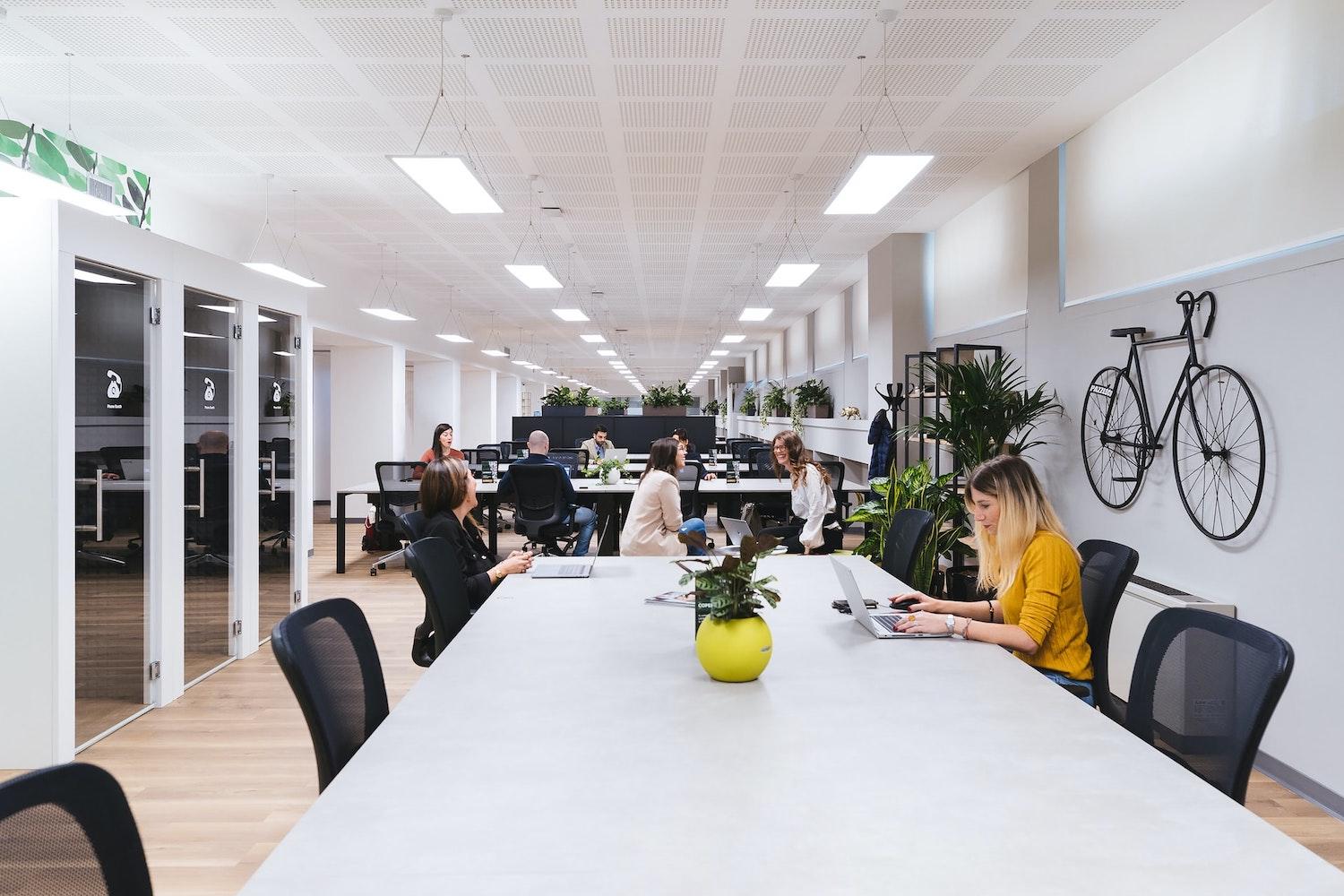
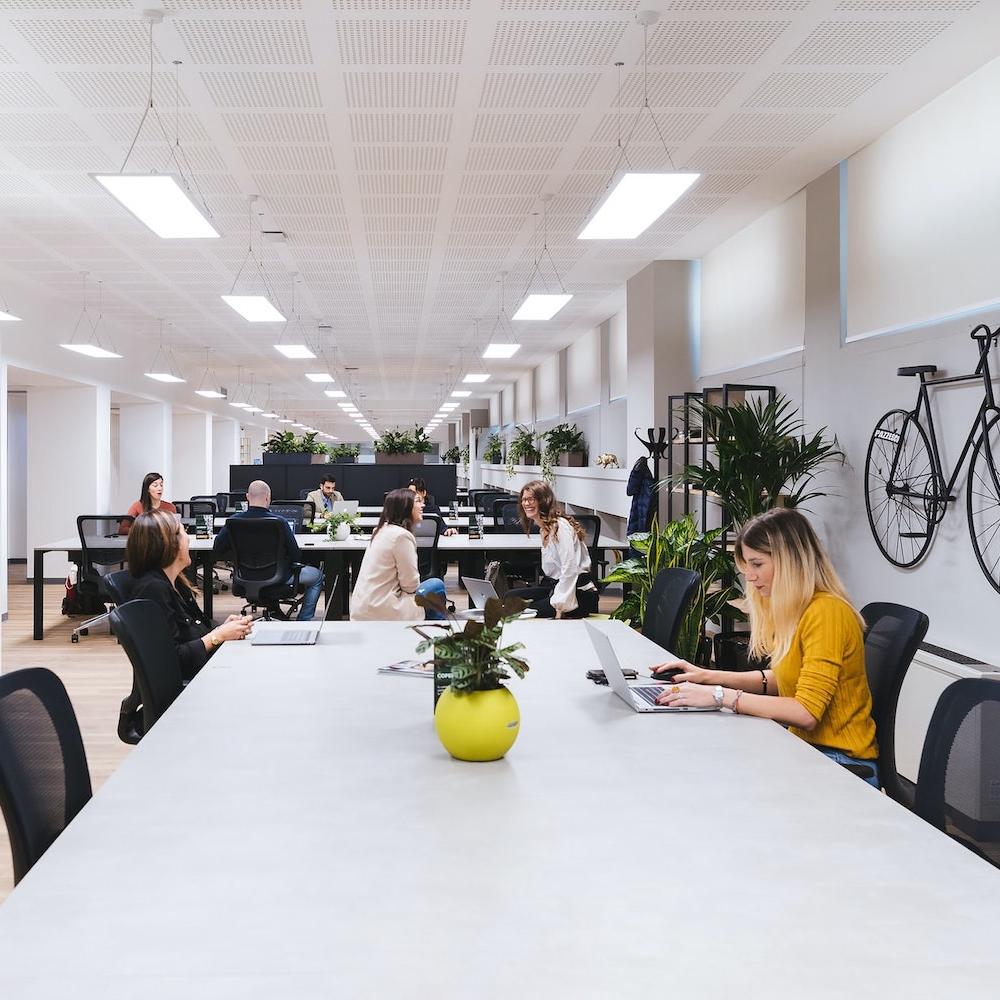
Sustainability is defined across three dimensions: social, economic and environmental. As businesses continue to adapt their operational models for post-pandemic planning, environmental, social and governance (ESG) initiatives are becoming more important for present and future employees, stakeholders and customers.
But what does this mean, exactly?
ESG is a wide-ranging topic, and in the information technology field, it encompasses everything from the employee experience to ethical IT. For the purpose of this piece, let’s focus on the concept of sustainability. When we talk about tech, we’re thinking about hardware — the personal and enterprise devices that are omnipresent in our daily lives — and the software that runs behind the scenes to keep all those devices from becoming expensive paperweights.
First and foremost, organizations must talk about change alongside practicable efforts to enact it — and validate and ensure accountability for those efforts by measuring them against standards like the 17 United Nations Sustainable Development Goals and CDP's disclosure standards. Today’s customers want to see that businesses are doing what they say they’re doing — and they’re putting their decision-making muscle behind those desires.
PwC research found that 79 percent of consumers are more likely to buy from a company that stands up for ESG practices, and 84 percent of workers are more likely to work for those companies.
At our annual BMC Exchange customer event, I recently moderated a panel of BMC decision-makers in a session about how to practice and plan for ESG within the enterprise. Here are some of the takeaways from that discussion.
Security and governance
Security and governance go hand in hand, and they’re bleeding into societal concerns because breaches go beyond the business to also affect the individual consumer. Organizations can face significant fines, lose customers’ confidence, or ruin their brand if they have a security breach that exposes corporate and customer information.
And that security lapse extends to customers who can then face phishing attempts, credit fraud, stolen credentials, identify theft and more. Part of ensuring a secure environment across a business and for everyone the business touches means putting secure practices around governance, and implementing real-time, ongoing vulnerability detection solutions. These measures create the assurance (never a guarantee!) that companies are intent on protecting their customers and communities.
Reducing carbon footprint
Another area where employees, customers and stakeholders are weighing their ESG business considerations is whether, and how, the companies they engage with are actively working to reduce their carbon footprint and greenhouse gas emissions. They want to know that companies are planning for the future state of the world beyond their business.
Take, for example, today’s data centers — they have servers running, HVAC systems to keep them cool and significant electricity requirements, and all of these things generate carbon emissions. By adding sensors and monitoring solutions to that environment, organizations can monitor and measure emissions, and analyze that data to better optimize their infrastructure and reduce its footprint.
Migrating to the cloud, or scaling or rightsizing that environment, is a solid first step but only part of the equation. Businesses can also expand the scope of inquiry to include transportation, supply chain and other partners — and focus on collecting and analyzing those complex data streams. That’s where automated solutions come in handy to orchestrate data pipelines, ingest the data, and correlate, optimize and understand it.
In doing so, organizations can leverage those insights to guide decision-making on smarter infrastructure and better business processes that reduce greenhouse gases. Once the necessary steps are identified, it also helps to have a methodology in place to forecast the carbon footprint going forward over the next five to 10 years and beyond.
Ethical IT and the circular economy
In the world of hardware — whether you build it, sell it or use it — being mindful of its entire lifecycle and making ethical decisions at every step has an impact. Some of the ways every business can support ethical IT include selecting products that are designed with recycled or ocean-bound plastics, maximizing the product's working life, and recycling and upcycling devices at end of life to keep them out of landfills when they’re replaced.
As a personal consumer, keep those same considerations front of mind. According to a recent study by the United Nations Institute for Training and Research (UNITAR) and the WEEE Forum, 5.3 billion of the 16 billion mobile phones possessed worldwide will become waste in 2022. If stacked one on top of the other, they’d stretch one-eighth of the way to the moon.
You can help by making responsible decisions at the point of purchase and extending the life of your devices whenever possible. Replace the battery, and move all those images to the cloud or delete unused apps to get back some of your storage space before you go buy another phone.
And when you do replace your phone, don’t put the old one in a drawer or randomly throw it away. Repurpose it with organizations like Medic Mobile, the 911 Cell Phone Bank, the National Coalition Against Domestic Violence, DV Safe Phone or Community Calling that deploy devices into communities that need them. If you’re planning to toss it, look for a licensed recycler that will ethically, responsibly dispose of both the device and its toxic components that can contaminate the earth, groundwater and waterways — and endanger flora, fauna and people.
Build better code
In the area of software development, sustainability factors into eco-design principles, such as leveraging modern agile software methodologies and emphasizing modular code and code reuse for cloud and software-as-a-service (SaaS) offerings. Software ownership, which includes development, operation and maintenance costs, also has opportunities for improvement through automation. Automating testing, maintenance and continuous deployment processes can help organizations achieve better sustainability by reducing energy consumption.
For web usage, organizations can consider the data load of the web pages they create to improve the energy consumption involved in the storage of hosting those pages — and for users to access them. Focus on experiences that provide value for end users and the environment.
According to the 2022 Edelman Trust Barometer, 58 percent of respondents will buy or advocate for brands based on their beliefs and values, and 60 percent will use that criteria when choosing an employer. With ESG a growing part of a global belief and value system, it’s no longer a nice to have; it’s now a must-have.
Watch the full BMC Exchange 2022 session here.
This article series is sponsored by BMC Software and produced by the TriplePundit editorial team.
Image credit: Copernico/Unsplash